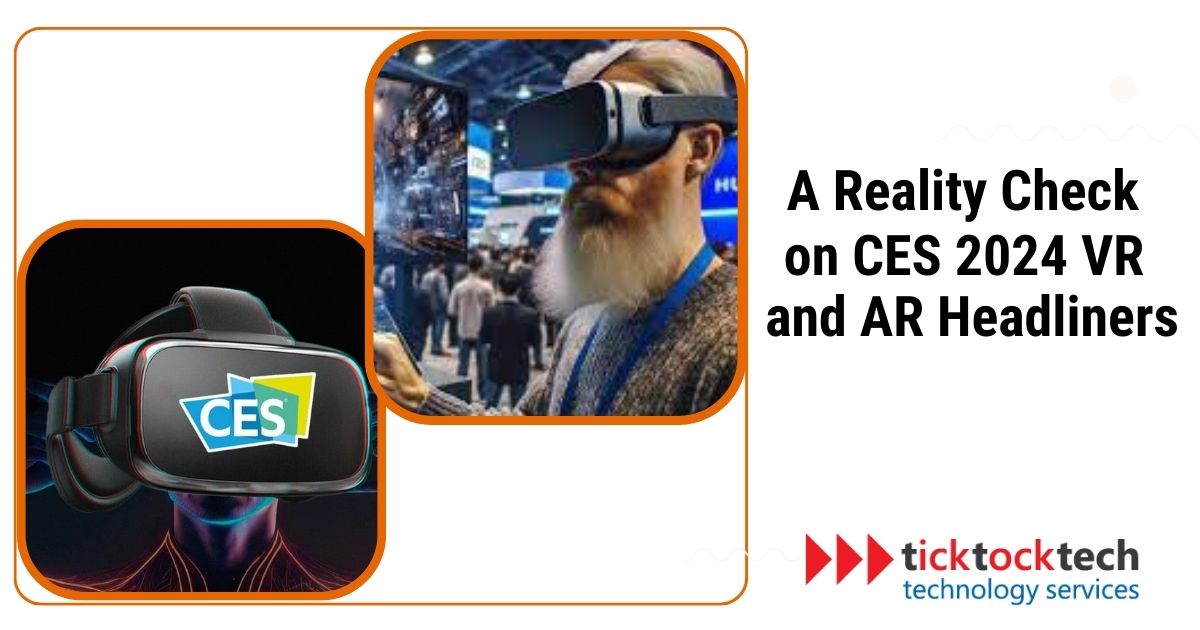CES 2024 made waves in the tech world by unveiling an impressive lineup of Augmented Reality(AR) and Virtual Reality(VR) technologies. The event presented innovative advancements featuring elements in areas like expansive virtual workspaces, personalized 3D movie theaters, and realistic training simulations.
Highlights of CES 2024 AR and VR Technologies
CES 2024 brought us the latest and greatest in virtual reality (VR) headsets and augmented reality (AR) glasses. Here are the top five extraordinary VR and AR gadgets that wowed attendees at CES 2024.
1. Sony’s New XR Headset
In an unexpected move at CES 2024, Sony surprised everyone by unveiling a high-end XR headset that directly competes with Apple’s Vision Pro in terms of capabilities and design. This head-mounted display, developed in collaboration with Siemens, is set to launch later in 2024.
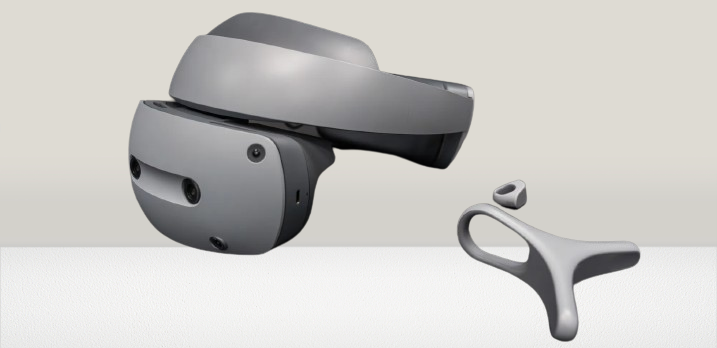
The Sony-Siemens XR headset boasts impressive features, including 4K OLED microdisplays and the advanced Qualcomm XR2+ Gen 2 chipset. It also comes with wearable controllers and a sleek design that combines elements from Sony’s PSVR2 with its own unique and attractive aesthetic.
During the CES 2024 keynote, Siemens delivered a speech outlining their vision for the industrial metaverse. To support this vision, Yoshinori Matsumoto from Sony took the stage and officially introduced the XR headset, showcasing how it aligns with Siemens’ goals.
While Apple’s Vision Pro targets both consumers and professionals, the Sony-Siemens headset is solely focused on professionals, engineers, and product designers. It is intended to be a content creation device that streamlines product development by facilitating the creation of 3D prototypes in virtual environments.
2. Brelyon Ultra Reality Displays
Brelyon introduced the Brelyon Ultra Reality monitor—an innovative alternative to VR headsets for achieving metaverse-style immersion. This eyewear-free monitor projects panoramic and cinema-scale virtual images with added depth. By leaning in, you can experience the illusion of an image floating at a distance of 5 feet, offering a wide 101-degree field of view.
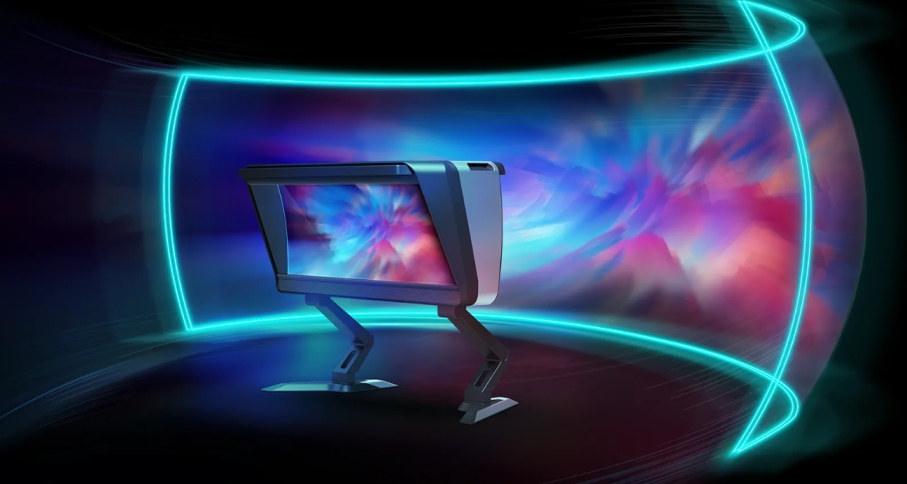
The Ultra Reality display aims to provide a convenient solution for extended metaverse experiences, eliminating the discomfort of wearing VR headsets like the Meta Quest. Additionally, the large projected screen size can serve multiple applications. Currently, the Ultra Reality display is used in industrial settings, such as teleoperation, control centers, and trading floors.
During a hands-on demo in New York City, a prototype Ultra Reality display was tested. It featured a 4K LG LCD screen with a 24×9 aspect ratio and a 60-hertz refresh rate. Brelyon plans to collaborate with LG to incorporate 5K OLED screens and a 144-hertz refresh rate in future models.
The technology behind the Ultra Reality display lies in engineering the wavefront of light to create a sense of depth. Unlike conventional autostereoscopic displays, which rely on angle sampling for shallow stereoscopic depth cues, Brelyon samples the light field in the wavefront domain, allowing for deep monocular depth perception. By strategically setting different parts of the image at slightly different depths for an amazing 3D sensation.
Additionally, Brelyon offers the Brelyon Ultra Reality monitor priced at $12,000. The Brelyon Ultra Reality Mini is also available for pre-order on Breylon’s website.
3. Asus AirVision M1 glasses
ASUS’ AirVision M1 glasses were a surprise announcement at CES 2024, with some considering them a rival to Apple’s Vision Pro headset. However, the AirVision M1s are actually more of an alternative to portable monitors. Unlike the Vision Pro and other AR headsets, the AirVision M1s don’t support interactive AR or recognize hand gestures. Instead, they’re made to provide extra screen space for easy movement.
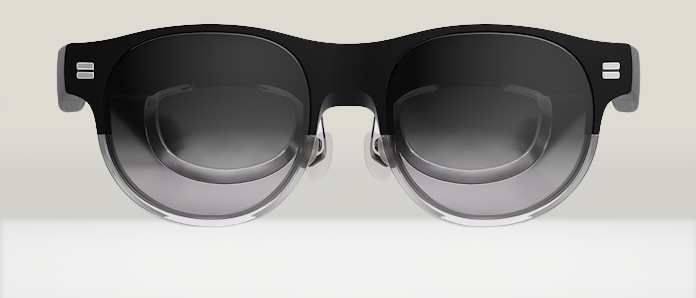
The AirVision M1s feature built-in microLED displays with a full HD resolution and can display up to six or seven virtual windows or desktops. They have three degrees of freedom, allowing you to pin virtual screens in virtual space or track your head as you move around. The glasses also come with nose pads and a prescription insert for people with glasses.
The AirVision M1 glasses are easy to set up, and you can create additional virtual workspaces by pulling up a small command menu and pressing the plus button. You can also freely adjust the overall size of the virtual display by zooming in or out. Using the laptop’s touchpad or typing wasn’t difficult, and the glasses come with magnetic blinders that clip onto the front to provide a clean black backdrop.
The price is the biggest difference between the AirVision M1s and Apple’s Vision Pro. While ASUS has yet to provide an official figure, the company spokesperson said they’re targeting around $700, compared to $3,000 for Apple’s headset.
4. Xreal Air 2 Ultra
The Xreal Air 2 Ultra, showcased at CES 2024, is the latest smart glasses offering from tech startup Xreal. These glasses provide mixed reality experiences, allowing virtual screens to remain fixed in place as the user looks around the room. Xreal is known for its existing augmented reality glasses and wearable display glasses.
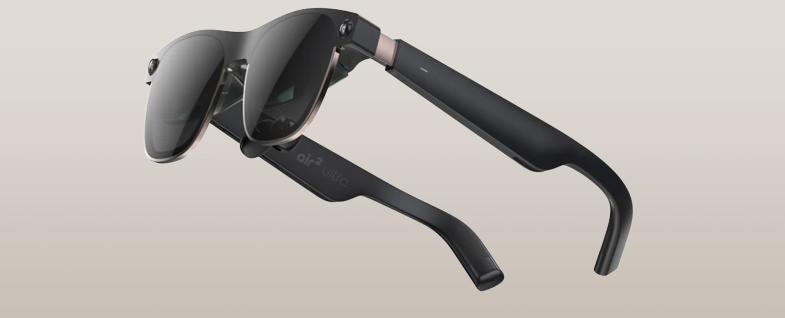
Priced at $699 and set to launch in March, the Air 2 Ultra aims to compete with Apple’s Vision Pro headset. Its success will hinge on the development of attractive applications by developers. Xreal positions the glasses as a developer model.
The Xreal Air 2 Ultra has a design that resembles slightly bulkier regular glasses and weighs about 0.2 pounds. It offers features such as full motion tracking (six degrees of freedom) and full HD resolution in each eye, with a 52-degree field of view. For 2D content, the viewing experience is akin to looking at a 154-inch display from a distance of 13 feet.
5. Nimo Glasses
Nimo Glasses, created by Nimo Planet, are special glasses designed to transform how we interact with technology. These glasses have high-quality displays and a wide field of view for delivering outstanding experiences.
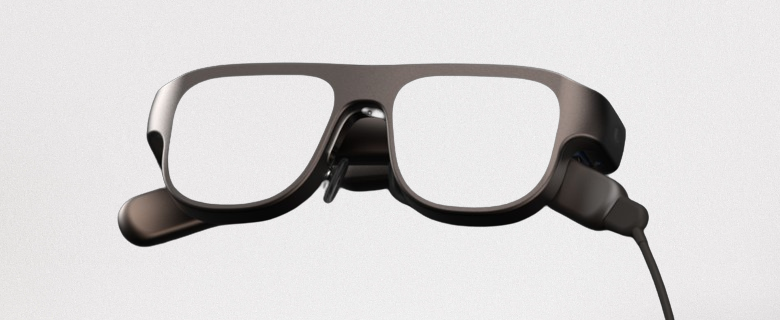
The real magic of Nimo Smart Glasses is their ability to connect to any AR headset, eliminating the need for traditional monitors and creating a virtual workspace that adapts to your preferences. Imagine effortlessly arranging multiple screens, displaying an Excel sheet, a PowerPoint presentation, and a video all at once. These glasses give you the choice to use a mouse or the top trackpad for easy selections and clicking.
Nimo Planet proposes a future where heavy equipment, big monitors, and computer towers are a thing of the past. Their goal is to simplify work processes through its compact computer and the power of augmented reality goggles.
Conclusion: CES 2024 VR and AR Review
CES 2024 showcased remarkable AR and VR technologies that featured high-resolution displays and wearable controllers. With their diverse focus across all industries, these technologies have the potential to revolutionize our operations. For more awesome tech showcased at CES, check out our posts on CES 2024 Recap and Flying Cars at CES 2024.

